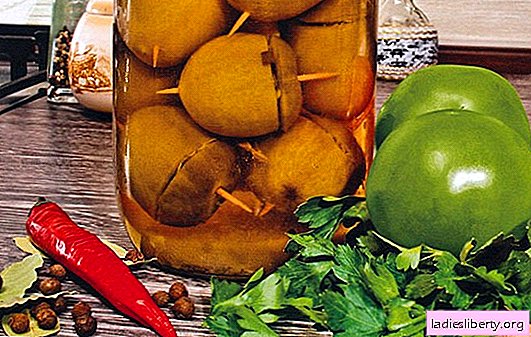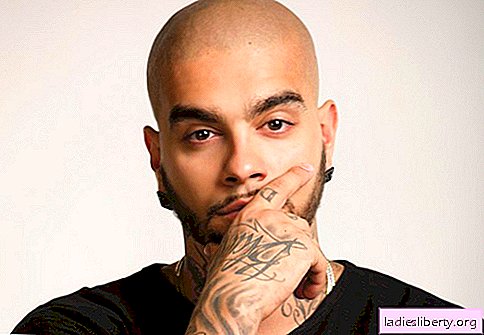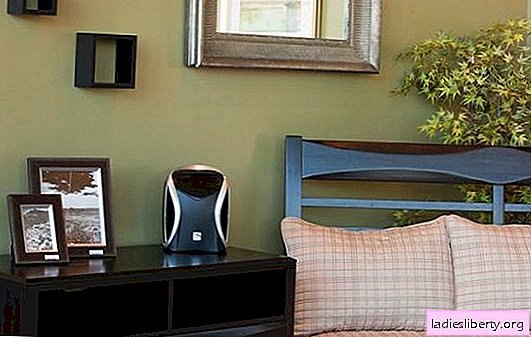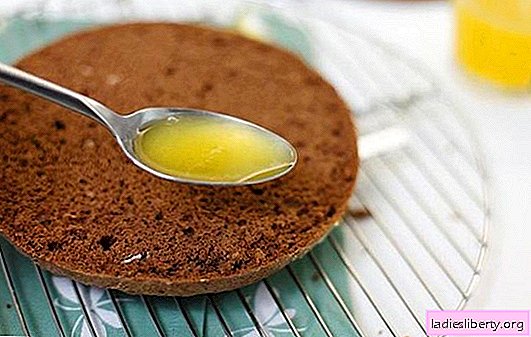
Knitting knitted blankets - one of the most comfortable and pleasant things that you can create with your own hands. In addition, a similar household item, which will warm in autumn or winter evenings, can also be incredibly beautiful. Perhaps novice craftswomen will now think that such a luxury as a knitted plaid is not for them, but you should not deprive yourself and your loved ones of such a wonderful thing because of doubts in their abilities. It is only necessary to choose the most suitable one from several knitting options for simple blankets and dare!
Schemes and description of knitting plaid with needles
The choice of models of blankets, as well as patterns, and ways of knitting them, is huge. It is also worth paying attention to whether the warm cover for adults knits, or, nevertheless, for kids - this is also an important criterion for the selection of yarn and patterns. For the smallest plaids should knit according to certain rules - we will tell you about them. In general, this whole art - to tie a good blanket. Let's try to understand it and consider both the easiest master classes on knitting with needles and more intricate variants of knitting blankets.
Master class for beginners

Beginner knitters need to start by exploring the most understandable and simple options for knitting blankets. Consider a master class for beginners knitting plaid knitting.
This model of the plaid is perfect for newborns or adult children. The plaid is pleasant, gentle and soft. And knitting it with knitting will be easy due to the knitting method taken as a basis: a simple two-sided pattern of face and back loops, as well as a garter knit for the edge of the product.
- What is needed
Yarn: “Svetlana” production “Semenovskaya yarn”, 250 m / 100 g, 50% wool, 50% acrylic.
Yarn consumption: 350 g
Instruments: circular needles number 3, knitting needle.
Knitting density: the main binding is Pg = 2.25 loops in 1 cm., Pv = 3.2; garter stitch Pg = 2.14 loops in cm, Pv = 4.3 rows in 1 cm.
- Calculate loops
To calculate the number of loops that you need to type on the needles for knitting a blanket, you need to determine the density of knitting of the main and garter stitch. Learn more about how to determine the density of knitting.
When calculating loops, we must take into account the desired size of the product and the pattern repeat. As for the size, the standard size of the baby diaper is 80 x 80 cm. We will focus on it. We need the pattern to be placed symmetrically on the rug. Therefore, you need to add to the whole rapport loop for symmetry of the pattern. You also need to take into account the width of the slats on the edge of the rug. We will knit strips 2.5 cm wide, this is 7 loops (including the edge). So, we need to knit 80 - 6 = 74 cm with the main viscous. One rapport of the main pattern is 18 loops or 8 cm. For symmetry, we need to add half a rapport, i.e. 9 loops or 4 cm. there are 74 - 4 = 70 cm. Determine the number of whole rapports: 70: 8 = 8.75, round up to the whole, we get 9 rapports. So, the number of loops of the main binding:
9 (the number of whole rapports) x 18 (the number of loops in the repeat) + 9 (the number of loops for the symmetry of the pattern) +7 (the number of loops for one plank) x 2 = 185 loops.
But we know that the density of knitting (Pg) of the finishing kerchief is smaller than the main one. This means that the plank at the bottom is not too loose and does not look stretched, we need to recalculate the loops.
Specify the total size of the plaid: 185 (number of loops) x 2.25 (Pg basic knitting) = 82 cm.
Now we define how many loops you need to score on the needles:
82 (part size) x 2.14 (flat cloth) = 175 loops.
- Main pattern
Bilateral pattern "cell" of the front and back loops with embossed texture. Pattern repeat: 18 loops wide, 24 rows long. For knitting a pattern of a pattern, a number of loops of a multiple of 18 plus 2 edge loops are drawn on the spokes.
Scheme and description:

 - classic front loop in the front row, unless otherwise indicated in the pattern description. In the purl row, so denotes the purl loop.
- classic front loop in the front row, unless otherwise indicated in the pattern description. In the purl row, so denotes the purl loop.
 - the classic purl loop in the front row, unless otherwise indicated in the text. In the purl row, the front loop is indicated as such.
- the classic purl loop in the front row, unless otherwise indicated in the text. In the purl row, the front loop is indicated as such.
1st, 3rd, 9th, 11th row: * 9 facial, 9 purl *;
All purl (even) rows knit in a pattern;
5th, 7th row: * 3 facial, 3 purl *;
13th, 15th, 21st, 23rd row:* 9 purl, 9 facial *;
17th, 19th row: * 3 purl, 3 facial *.
The pattern repeats from the 1st to the 24th row.
- Working process
We type on the spokes in the main way 175 loops and knit 11 rows of garter stitch. We will edge the edge a little differently than usual: we will not remove the first loop in the row, but we knit the front face behind the back wall.
 Figure 1: The working thread is turned down and back. Fig.2: The loop is knitted behind the back wall
Figure 1: The working thread is turned down and back. Fig.2: The loop is knitted behind the back wallWe knit the last loop in the row as usual with the face loop.
In this case, the edge of the edge will stretch more. Given that the density of knitting horizontally (Pg) of the main binding is less than finishing, this will allow the bar to stretch and compensate for the difference.
If the density of the knitting of the main and finishing knit vary significantly, we recommend knitting the bar with shortened rows.
In the 11th row, we will make straight mantles for adding loops. We do additions evenly. We will tie 11 loops (including the edge loop), we will make a straight wrap, and then we will do the bows through 18 loops (pattern repeat). In total, the length of the details will be 10 nakidov. In the next row go to the main pattern. At the beginning and end of a row, we knit 7 loops with a garter stitch and then the main pattern. Nakida knit for the back wall, without openwork, so that the addition was invisible.
In order for the plaid to be square in height, we need to tie 11 rapports (264 rows) with the main pattern. In the last row, we subtract 10 loops in the same places where they were added, tying two loops together with a tilt to the left. We tie the bar and close the row in the classic way.

Product for a newborn

It is very important and responsible business to tie a plaid with needles for a newborn. Whether it is a gift to a family of close people or to herself for the first birthday of the baby, you need to take into account several important points when knitting the first warm veil in the life of a baby.
Choosing yarn for knitted children's things, you should pay attention to the composition: it is better to choose a yarn, where there is wool with a part of acrylic, or merino wool, or baby alpaca with an admixture of microfiber. Be sure to make sure that the threads do not prick the skin, even if the label says that the yarn is intended for knitting children's clothes.
Let's try to tie another simple blanket, which will be able to make a newcomer. And help to tie the blanket for a newborn with a knitting pattern and a detailed description.
- Plaid knitting needles for newborns
Knitting density:14 loops * 21 row = 10 * 10 cm.
The size: 89x96.5 cm
- What is needed
Yarn: 4 skeins of RedHeartSoftBabySteps yarn (100% acrylic, 142 g / 234 m.).
Instruments: circular needles 5.0 mm. over 90 cm long
- How to knit a plaid
How to knit 2 faces together. left:enter the right knitting needle into the first, then into the second loop of the left knitting needle, knit these two loops together with the front one.
How to knit 2 faces together. right:enter the right knitting needle into the second, then into the first loop of the left knitting needle, knit these two loops together with the front of the front wall.
- Main job
Dial 121 loop on the spokes.
- 1st row(persons. party): 8 persons., (7 out., 7 persons.) - 8 times, 1 persons.
- 2nd row: 8 out., (7 persons., 7 out.) - 8 times, 1 out.
- 3rd row: 4 persons., Nakid, 2 persons together. to the right, 2 persons., (3 ex., nakid, 2 together ex., 2 ex., 3 persons., nakid, 2 together persons. to the right, 2 persons.) - 8 times, 1 persons.
- 4th row:repeat 2nd row.
- 5th row:2 persons., 2 persons together. right, nakid, 1 person., nakid, 2 persons together, right, 1 person., (1 w., 2 w. together, nakid, 1 w., nakid, 2 together w., 1 w., 1 person. , 2 together the person to the right, nakid, 1 person., Nakid, 2 together the person to the right, 1 person.) - 8 times, 1 person.
- 6th row:repeat 2nd row.
- 7th row:3 persons., 2 persons together. right, nakid, 3 persons., (2 ex., 2 together ex., nakid, 3 ex., 2 persons., 2 together persons., nakid, 3 persons.) - 8 times, 1 persons.
- 8th row:repeat 2nd row.
- Repeat 2-8 rows - 18 times.
- The last row:8 people. (7 out., 7 people.) - 8 times, 1 person.
Close the loop.
- Scheme and designations:

- Plaid finish
1st row (face. side): * (raise 6 loops as facial along the pattern square) - 19 times, (lift 6 loops along the pattern square) - 16 times, lift 5 loops along the next pattern square, repeat from * = 430 loops on the needles.
Put a marker.
Start knitting in a circle.
2nd row:from loops.
3rd row:1 person., * Knit 5 loops in the next. loop, turn, 5 w., remove the trail. loop, turn, 2 persons together. to the right, {(remove the last loop from the right knitting needle on the left, 1 person.) - 2 times, 1 person., throw the previous loop of the right knitting needle onto the last knit} 3 times, (remove the last loop from the right needle to the left, 1 person .) - 2 times, 2 persons together. right, throw the previous loop of the right knitting needle on the last knit, close 3 loops, repeat from *
Close all loops. Hide the ends of the threads.
How to tie a children's blanket
Older kids will be more interesting to hide bright unusual blanket. Therefore, you need to base yourself on choosing whether a blanket fits for a boy or for a girl. We propose to perform a blanket in interesting colors and voluminous relief motifs, which the girl will definitely like.
In this model of the plaid there are a lot of interesting elements, patterns and motifs - therefore, it is fascinating to knit skilled craftswomen. Spit, mesh, leaves, Aran weaving - blanket will be very rich in different patterns. And although adults would not have refused such a thing, nevertheless we will tie the blanket for children with knitting needles.

- What is needed
Yarn: 8 skeins of Zealana Kiwi Lace Weight (40% merino wool, 30% cotton, 30% possum wool, 199m / 40g);
Instruments: Circular needles № 3,5; 2 auxiliary needles; 6 markers.
Knitting density, the sequence of patterns: 27 p. And 30 p. = 10 x 10 cm
Children's plaid needles - scheme, description

- Patterns:
Right edge: knit according to scheme 1 from the 1st to the 10th p.
Interior: knit according to scheme 2 from the 1st to the 20th p.
Central part: knit under the scheme 3 from the 1st to the 20th p.
Left edge: knit under the scheme 4 from the 1st to the 10th p.
Grid: knit on 8 p. according to scheme 5:
Every r .: 3 persons., Nakid, 2 p. Together izn., Nakid, 2 p. Together ip., 1 person.
- Wrinkling
First half fold: transfer 10 points to the first knitting needle, transfer the following 10 points to the following knitting needles (5 w., 5 persons.) Keep all three knitting needles from the wrong side of knitting. Fold the needles across from each other, folding them to form a fold and tie 3 points together. To perform 3 pp together persons. enter the end of the right knitting needle into the first n. of the first knitting needle, then into the first n. of the second knitting needle and into the first n. of the third knitting needle and tie 3 n. Repeat 9 more times.
The second half of the fold: transfer 10 points to the first knitting needles and place them on the front side of the knitting. Translate the following 10 paragraphs (5 persons., 5 int.) To the following needles. Fold the needles across from each other, folding them to form a fold and tie 3 points together. To perform 3 pp together persons. enter the end of the right knitting needle into the first n. of the first knitting needle, then into the first n. of the second knitting needle and into the first n. of the third knitting needle and tie 3 n. Repeat 9 more times.
7 n. To cross over to the right: 4 n. needles at work, 3 persons., then knit with a reminder. Knitting needles 1 p. and 3 p.
7 n. Cross over to the left: 4 n. Leave for recall Knitting needles before work, 3 persons., then knit with a reminder. Knitting needles 1 p. and 3 p.
- Knitting description

On the knitting needles dial 547 p. And knit a border as follows:
1st p .:individuals.
2nd p .: 1 person., 2 p. Together izn. for the back wall of n., nakid, 270 persons., 2 n. together persons., knit the last 3 n. nakid's, 2 nos. together iz., 1 persons. = 546 p.
3rd p .:3 persons., 15 out., 30 persons., * 30 out., 30 persons. *, Repeat from * to *, knit the last 18 p. 15 out., 3 persons.
4th R.: 1 person., 2 p. Together izn. for the back half loop, nakid, 15 persons., 30 w., * 30 people., 30 w. *, repeat from * to *, knit the last 18 p. 15 people., nakid, 2 p. together w., 1 persons .
Repeat the last 2 p. 9 times = 22 p.edges.
- Performing folds
23rd p .: 3 faces., Make 9 folds, 3 faces. = 186 p.
24th p .: 1 person., 2 p. Together izn. for the back wall of n., nakid, 17 persons. (2 paragraphs together persons., 16 persons.) 8 times, 2 points together persons, 17 persons., Nakid, 2 points together, out of., 1 persons. = 177 p.
25th R.: individuals.
26th r .:1 person., 2 p. Together izn. behind the back wall of n., nakid, 14 faces., place a marker, 33 faces., place a marker, 8 faces., place a marker, 61 faces., place a marker, 8 faces., place a marker, 33 faces., place a marker, 14 persons., Nakid, 2 p. Together izn., 1 persons.
- The main part and the sequence of execution of patterns
1st p .: 17 p. Of the right edge according to scheme 1, place the marker from the left knitting needle on the right, 33 n. Of the internal part according to scheme 2, place the marker from the left knitting needle on the right, 8 p. the central part according to scheme 3, place the marker from the left knitting needle on the right, 8 p. of the grid, place the marker from the left spoke on the right, 33 n. of the internal part according to scheme 2, place the marker from the left spokes on the right, 17 n. Scheme 4.
Continue to knit on schemes up to 438 p. (Repeat 18 times for the central and internal part 21 times, repeat 8 times for the left and right edges 43 times).
439th r.: perform the 9th p. right edge, place the marker on the left knitting needle on the right, 1 out, 12 faces., 7 cross over to the left, 12 faces., 1 out., place the marker on the left spoke on the right, 8 paragraph mark, place the marker on the left The needles on the right, 19th p. center part, place the marker on the left knitting needle on the right, 8 p. of the grid, place the marker on the left knitting needle on the right, 1 res., 12 faces., 7 p. cross over to the left, 12 faces, 1 res., place the marker on the left The needles on the right, 9th p. left margin.
440th R.:close 4 p., 2 p. together ex. for the back wall of n., nakid, knit faces. to the last 3 p., nakid, 2 p. together izn., 1 persons. = 177 p.
Finish:soak for a few minutes in warm water or wash according to the instructions for the yarn, gently squeeze in a clean towel to remove excess moisture, spread out, stretching to the appropriate size until dry.

Plaid of squares
The patchwork style is successfully used in knitting - for this, they sew or link pre-knitted motifs with different patterns into a single product. This method of knitting is very popular, so you should definitely try to knit a plaid of squares with knitting needles. Make it easy.
There are a lot of options for knitting a plaid of this type, as well as design decisions that can “revive” it: make traditional small squares of all possible colors, or choose only a few harmonious shades of yarn for a plaid. Some knit plaids of squares in a single-color version, focusing only on a variety of patterns of connected motifs. The squares themselves can be flat, and can be decorated with convex elements, which will also add the patchwork charm to the finished product.
We picked up the "advanced" version of knitting a plaid with squares, so that it would be interesting for experienced knitters. It will take a little more time and effort, but the result is definitely worth it.

- What is needed
Yarn (100% cotton; 120 m / 50 g) - 200 g of mustard-yellow, light brown, tsv. cinnamon and hot pink, as well as 150 g light green and col. fuchsia
Instruments: stocking needles No. 4; circular needles No. 4 with a length of 60 cm; hook number 3.5.
- Knitting plaid - scheme and description of the progress
The size:110 x 132 cm
Pattern "Square with leaves"
Dial 12 loops on the spokes, distribute the loops into 4 knitting needles (= 3 points on each knitting needle), close into a ring and knit in accordance with scheme 1. Odd circular rows are given on it. In the even circular rows, knit the loops according to the pattern or as indicated, and also knit the nakida, as indicated.
The diagram shows 1 rapport = ¼ square, which knit a total of 4 times (1 rapport is always on 1 spoke), while doing the increase, as indicated. If necessary, go to the circular needles.
1-38th krug.r. run 1 time, then all 164 p. close the face.
Multicolored square
Type 8 loops on the knitting needles, distribute the loops into 4 knitting needles (= 2 points on each knitting needle), close into a ring and knit according to scheme 2.
The diagram shows all the circular rows and 1 rapport = ¼ square, which knit a total of 4 times (1 rapport is always on 1 spoke), while doing the increase, as indicated. The color of the thread is indicated in the text next to the number of the circular row. If necessary, go to the circular needles.
1-40th krug.r. perform 1 time, then close all 164 p. of the row with the front thread of the last color.


- Knitting density
41 p. X 36 krug.r. squares with "leaves" = 22 x 11 cm;
41 p. X 40 krug.r. multi-colored square = 22 x 11 cm;
each square is approx. 22 x 22 cm
- Square layout plan

- Working process
Associate 16 squares with "leaves", of which 3 squares are bright pink, mustard yellow and col. cinnamon, as well as 2 squares of light green and light brown.
Tie 15multicolored squares in accordance with the data of the color of the thread AE next to the number of the circular row as follows:
Square B1(2 parts): A = light brown thread, B = thread col. fuchsia, C = light green thread, D = thread col. cinnamon, E = mustard-yellow thread.
Square B2(3 parts): A = light green thread, B = thread col. cinnamon, C = mustard yellow thread, D = light brown thread, E = bright pink thread.
Square b3(3 parts): A = bright pink thread, B = thread col. cinnamon, C = mustard yellow thread, D = light green thread, E = light brown thread.
Square b4 (3 parts): A = light brown thread, B = mustard-yellow thread, C = thread col. cinnamon, D = hot pink thread, E = thread col. fuchsia
Square b5 (4 parts): A = thread col. fuchsia, B = bright pink thread, C = light green thread, D = mustard yellow thread, E = thread color. cinnamon
Square b6(2 parts): A = mustard yellow thread, B = light brown thread, C = light green thread, D = thread color. fuchsia, E = thread col. cinnamon
- Assembly
Place the squares according to the layout plan and sew on the wrong side of the work.
From thick yarn
The fashion for thick yarn plaids never passes, and if you have not tried to knit very warm and cozy plaids, then it's time to do it right now! Если связать плед спицами из толстой пряжи, гарантировано: в доме появится самая любимая вещь для каждого из членов семьи, ведь ощущение тепла будет исходить даже от одного только его вида! Плед из толстой пряжи смотрится воздушно и интересно, притом, работает это даже для самых незамысловатых орнаментов.

- What is needed
Пряжа: 4 мотка пряжи RED HEART Comfort Chunky (100% акрил, 360 г./410 м.).
Инструменты: круговые спицы 15.0 мм. длиной 80 см.
- Плед из толстой пряжи
Размер: 124 х 140 см.
Knitting density: 8 петель * 10 рядов = 10*10 см. нитью в два сложения узором.
- Схема и описание узора
Коса 3х3 вправо: на дополнительную спицу снять первые 3 петли, разместить их вместе с дополнительной спицей за работой, вязать 3 лицевых с левой спицы, затем вязать 3 лицевых с дополнительной спицы.
Коса 3х3 влево: на дополнительную спицу снять первые 3 петли, разместить их вместе с дополнительной спицей перед работой, вязать 3 лицевых с левой спицы, затем вязать 3 лицевых с дополнительной спицы.
- Схема и ход работы

Нитью в два сложения набрать 98 петель.
1-й ряд (лиц. сторона): 12 лиц., 2 изн., *6 лиц., 2 изн., повторять от * до последних 12ти петель, 12 лиц.
2-йи все изнаночные ряды (изн. сторона): 6 лиц., 6 изн., *2 лиц., 6 изн., повторять от * до последних 6ти петель, 6 лиц.
3-й ряд: повторить 1-й ряд.
5th row:6 лиц., коса 3*3 вправо, *2 изн., 6 лиц., 2 изн., коса 3*3 вправо, повторять от * до последних 6ти петель, 6 лиц.
7-й ряд:вязать как 1-й ряд.
9-й ряд:вязать как 1-й ряд.
11-й ряд:12 лиц., *2 изн., коса 3*3 влево, 2 изн., 6 лиц., повторять от * до последних 6ти петель, 6 лиц.
13-й ряд:вязать как 1-й ряд.
15-й ряд:вязать как 1-й ряд.
16-й ряд:вязать как 2-й ряд.
Повторять для узора 5-16 ряды до высоты 140 см.
Закончить 9-й or 15-й row.
Закрыть все петли. Спрятать концы.

Видео урок по вязанию пледа с узором
Как вязать пледы разных видов и сложностей мы уже узнали, но как выглядит сам процесс поэтапного исполнения - совсем другой вопрос, ответ на который можно найти в подробных видео с мастер-классами по вязанию пледа. В данном случае, речь идет о красивом пледе с несколькими узорами.
Видео «как связать спицами плед с узором»
А вот так выглядит процесс вязания простого пледа из мастер-класса для новичков:











